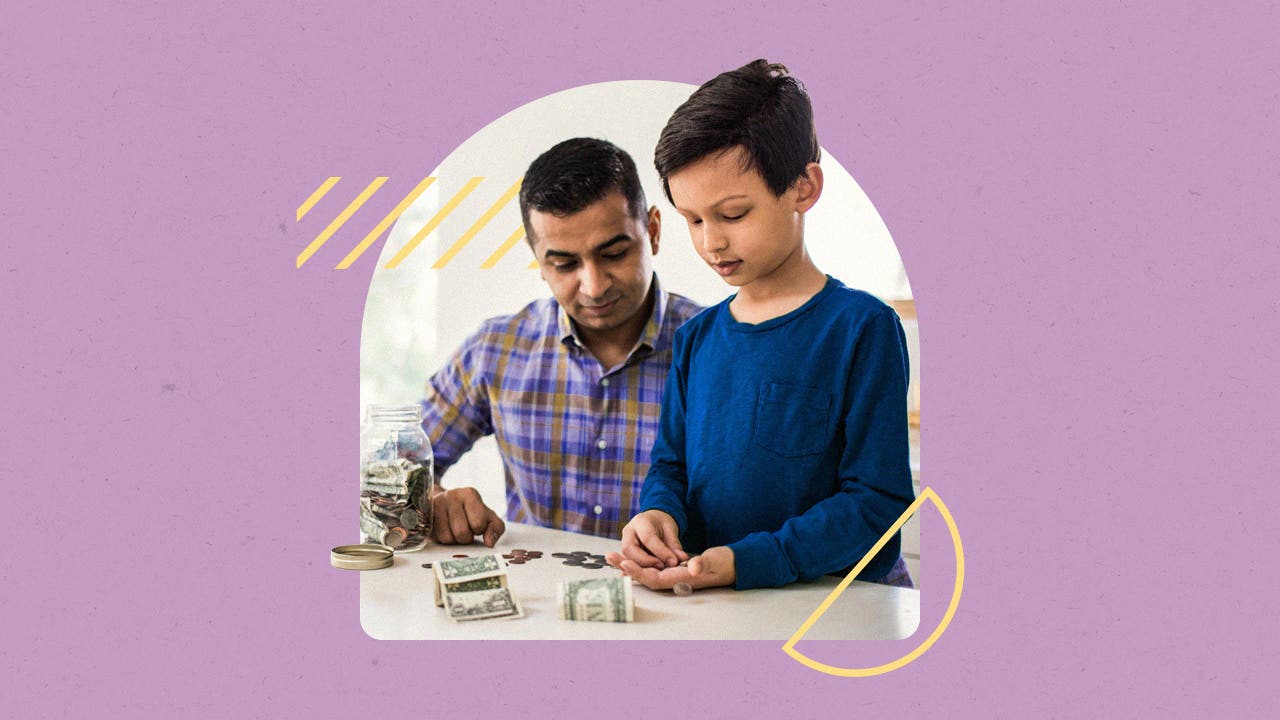How to save money for a child

The Bankrate promise
At Bankrate we strive to help you make smarter financial decisions. While we adhere to strict , this post may contain references to products from our partners. Here's an explanation for .
Parents of a child born in 2015 can expect to pay an average of $310,605 to raise them until the age of 17, according to a 2022 study released by nonprofit economic think tank Brookings Institute.
This figure works out to more than $18,000 each year, which might not seem so bad, but keep in mind the amount could double or triple depending on how many children you have.
With this in mind, it’s smart to start saving for a child once you decide to have one. You may wish to save money for bringing your child into the world (think medical bills, parental leave and furnishing the baby’s nursery) as well as for the significant cost of a college education.
Experts have suggested a few savvy ways to start saving for a child. If you want to get a leg up on parenthood, consider these financial moves.
Evaluate your cash flow
According to certified financial planner Brittney Castro, it’s important to assess your current financial situation before you think about having a child. Castro suggests getting an accurate pulse on where you stand with your budget, your credit score, any debts you may have and your financial assets and accounts. This includes going over how much you spend each month and looking for areas you could cut down.
From there, identify how much you need for an emergency fund.
“Your emergency fund, or cash cushion, is the first layer of your financial foundation,” she says.
Most financial experts suggest having at least three to six months of expenses set aside for emergencies like a loss in income or expensive medical bills.
Automate your savings
According to Castro, the easiest way to save is by setting up monthly automatic contributions into your savings account as well as any kid’s savings account you have set up. This way, you begin to think of your savings like a bill you have to pay before you spend on other items.
Castro says an app like Mint can help you stay on track with your long-term savings plan, since it incorporates functions such as goal setting and customized budgets, as well as personalized insights and recommendations on areas where you could be saving.
Create a children’s savings account
Also consider opening a high-yield savings account for your child, keeping in mind that a savings account is a good place to stick your child’s birthday money or holiday gift money so it can grow over time.
If your child earns an income, you could also help them open a Roth IRA account. Todd Tharp, president and CEO of BluPeak Credit Union, says that a Roth IRA can be a good option for a child since these can be established on their behalf at any age.
Tharp points out that the major benefits of opening a Roth IRA for your child include easy withdrawals of contributions at any time and compound interest earned over time.
“By the time your child reaches retirement, they could have more in their Roth IRA than they would in a traditional savings account,” he says.
In 2023, anyone who earns an income can contribute up to $6,500 in an IRA account, including a traditional IRA and a Roth IRA. Individuals ages 50 and older can contribute an additional $1,000 in what is known as a “catch-up contribution.”
Save for your child’s college costs
Also consider saving for your child’s college education sooner rather than later, especially if your state offers some tax benefits if you do so. In the state of Indiana, for example, parents who put money into a 529 savings account may be eligible for a 20 percent state income tax credit each year up to $1,500 ($750 for married filing separately) on their contributions.
Tony Drake, a financial adviser at Drake & Associates in Waukesha, Wisconsin, says the money you save in a 529 plan won’t be taxed when you withdraw it as long as you use it to pay for approved educational expenses like tuition, fees, books, supplies and room and board.
“Anyone can start or contribute to a child’s 529 plan, even grandparents,” he says.
Of course, you should make sure you open a 529 plan with solid investment options that can help your college funds grow over time.
Save for your child’s life experiences
According to certified financial planner Castro, your savings strategy should also include setting aside some money for fun. With a fun fund, she says, you save for vacations, experiences, holidays and birthdays.
“This is another important part of your financial foundation, as it addresses short-term financial needs and wants without jeopardizing long-term financial accounts such as your 401(k), 529 plan and real estate assets,” Castro says.
To help your money grow, she suggests setting up a monthly contribution to a separate, high-yield savings account or money market account. “That way, you can clearly see the money you have to spend on these categories and you can keep your fund separate from your emergency savings,” she says.
Don’t forget to prioritize your own retirement savings
No matter what, experts agree you shouldn’t save for kids to the detriment of your other goals.
“While your child can apply for financial aid or college loans down the road to help cover the costs of college, you cannot take a loan out to fund your retirement goal,” notes Castro. “It is a great gift to your children for you to retire successfully and be financially independent, even if that means you are not able to save as much for their college expenses.”
Financial advisor Drake underscores this idea, explaining that his office sees many young couples who deal with student loan debt and want to ease that burden for their children. However, these younger couples are often saving money in a 529 plan for their child while neglecting their own retirement savings.
“I have three kids and I know how difficult it can be to put yourself first,” Drake says. “However, you have to prioritize your retirement savings. If you are meeting those savings goals and have money left over, then consider saving for your children’s future college expenses.”
Bottom line
Setting aside funds for a child is a noble goal, whether that includes saving money to bring home a newborn or opening up a 529 savings account for a child who’s already here. Regardless, your best move is getting started right away.
Just make sure to take care of yourself and your own future first. Kids have a lifetime to earn a living and save for themselves, but parents working toward retirement may only have a few decades (or less) to get their financial lives together.
– Writer Holly D. Johnson contributed to an earlier version of this article.
Related Articles



